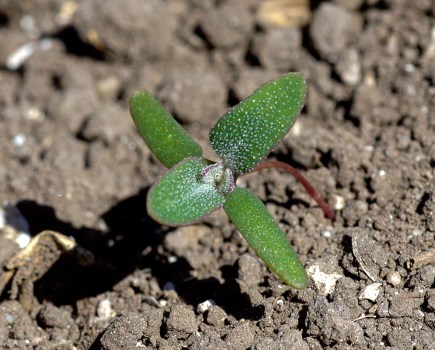New innovative developments in crop nutrition promise to deliver lower carbon farming and reduced input use, but are these claims founded and is there a preferential approach for their use? CPM speaks to experts for their views.
“One of the most significant things we can do is to focus on nitrogen use efficiency.” – PETER SCOTT
By Janine Adamson
Inorganic nitrogen fertilisers are the single largest component of the carbon footprint of crop production, reminds Origin Soil Nutrition’s technical director, Peter Scott. Therefore, any attempt to decarbonise food production has to address this, he adds.
It might be a strong and rather direct statement, but it’s indeed fact. “In a typical combinable crop, 50% of its carbon footprint is related to the production of the fertiliser in the first place, with the other 50% due to in-field emissions.
“But, around half of human dietary protein consumed globally is directly related to the use of inorganic nitrogen and in the West, this would be much more. The issue of nitrogen use goes to the very heart of sustainable food production.”
It’s undoubtedly a critical issue which will involve collaboration across the entire sector to rectify, but are there areas to target first – lower hanging fruit? To start, Peter believes one solution could be the use of green ammonia, where the hydrogen element of ammonia comes from water rather than gas. “This could play an important role in the future with regard to reducing the carbon footprint of manufacture, but we must also address in-field emissions.” This is because from a very practical sense, the pH of soil together with its organic matter content and structure plus other considerations such as drainage, all impact emissions, he says. “Consequently, better management is essential in the future.
“One of the most significant things we can do – and one of the most important benchmarks for delivering future sustainability full stop – is to focus on nitrogen use efficiency (NUE). The higher the NUE, the lower the N loss, but you have to measure it to manage it,” stresses Peter.
“NUE changes from season to season, field to field and crop by crop, so it’s no good using default average values or national levels. We have to get local and encourage all growers to do this.” Agrii’s fertiliser technical manager, Tom Land, agrees that it should all start with measurement. “If we contextualise this with the current season, there’s a very mixed bag of winter cereals out there depending on the drilling date.”
SEASONAL IMPACT
“This, combined with higher soil temperatures, means more mineralisation of N and crops looking better than what might have been expected thanks to the conditions. However, winter isn’t over yet so there’s potential to lose further N, plus crop demand could be above average. “This is why it’s critical to have an understanding of the soil nitrogen supply and residual levels by conducting timely soil testing.”
Reflecting back to Peter’s statement regarding better soil and crop management to mitigate agricultural emissions, what comes next from an agronomic perspective? Despite fully championing new innovations within fertiliser technology, Tom believes it’s back to the basics.
“You have to get the crop into a solid, responsive state before considering anything like biostimulants, endophytes or alike. So what’s tissue testing telling you about the health of the crop? Are there any nutrient deficiencies such as molybdenum or iron?
“As for sulphur, this can’t be ignored across all crops – conditions the past few seasons mean we’re seeing many crops deficient in this key nutrient. Then, once any deficiencies are rectified, we can begin to look at alternative technologies,” he says.
As such, Tim Horton, Agrii’s technical manager for combinables, suggests a product worth considering early doors is Agrii-Start Release – a soil phosphorus activator. “Agrii-Start Release works in the soil to prevent lock-up and in turn, increases the release of phosphate and other crop nutrients for uptake through plant roots.
“Soil reserves should always be the first port of call in terms of nutrition for optimum NUE, and Agrii-Start Release helps the crop to access those reserves in a more efficient way.”
In regard to its sustainability credentials, Tim highlights that Agrii-Start Release reduces the use of finite rock phosphate, which can be replaced with lower cost, citrate-soluble phosphate options like manures and digestate.
Then, something most growers are now familiar with, is biostimulants. “Here, we’re mostly looking at an early application to get crops moving to hopefully compensate for poor autumn conditions,” explains Tim.
“Biostimulants are a proven way to support and make conventional crop health/production products more effective while unlocking a crop’s potential. Plus, boosting rooting helps to improve nutrient absorption which contributes to NUE.”
However, Tom stresses with so many options now available on the market, an end goal has to be identified first. “Understand what you actually want it to do, for example, is that target stimulating nutrient translocation in the plant?
“There are many formulations available which offer an array of benefits including overcoming stress, and we know stress reduces a plant’s ability to take up and utilise nutrients. Biostimulants play an important role but my advice is to be mindful of spend versus key nutrient input costs,” he stresses.
But according to Tim, whether it’s down to price or environmental concerns, grower attention is moving away from conventionally produced fertiliser. “We’re seeing increasing interest in biofertiliser technologies such as endophytes, which are based on bacteria which fix atmospheric nitrogen.”
CROP COLONISATION
“The bacteria, often applied in cereals as a foliar spray, colonise the crop to improve their nutrient use, which in turn can increase yield and quality,” he explains.
Tom adds that the ideal time to apply endophytes is when the bacteria has the best chance of survival. “The bacteria require adequate air temperature in the spring – which is around April time – for optimum growth and multiplication. The temperature of the water in the tank which they’re applied from also has an impact.
“But, this timing should work well because it gives growers an opportunity to build the right foundations first, so the crop’s ready to receive the endophyte once it’s applied,” he says.
Tom stresses that although endophytes are an obvious solution in the quest to improve NUE, the purpose of their use shouldn’t be to cut back on N. “It’s more about enhancing what’s applied and the subsequent gains in NUE and environmental sustainability.”
Although the aforementioned solutions are relatively proven in the field, fertiliser technology is a fast-paced area of the market, states Tim. “Yes farmers are interested in these options as a way of reducing their carbon footprint, but they have to reliably deliver, which is where Agrii trials come in.
“We have a comprehensive trials programme in the field, and this is about to be supplemented with a new glasshouse facility for ‘fast fail’ screening. This investment has been made because we want to help farmers to understand what these products are actually doing and what they could achieve on farm, while speeding up the availability of innovation,” he concludes.
This article was taken from the latest issue of CPM.
For more articles like this, subscribe here.
Sign up for Crop Production Magazine’s FREE e-newsletter here.




